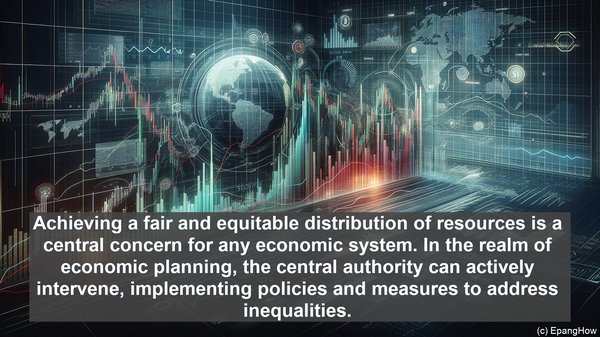Introduction: The Core of Economic Systems
Greetings, ladies and gentlemen! In the realm of economics, two fundamental approaches govern the allocation of resources and the functioning of markets: economic planning and market mechanism. While both aim to address the same underlying challenge, they do so through distinct methodologies. Today, we’ll embark on a journey to explore the intricacies of these systems, highlighting their differences and the implications they hold.
Economic Planning: Orchestrating the Economy
At its core, economic planning involves a centralized authority, typically the government, charting the course of an economy. This authority takes on the responsibility of determining production levels, setting prices, and allocating resources. The objective is to achieve a predetermined set of goals, often encompassing aspects like employment, growth, and equity. By exerting control over various economic levers, such as fiscal and monetary policies, the planning authority aims to shape the economy’s trajectory.

Market Mechanism: The Invisible Hand
In stark contrast, the market mechanism operates on the principles of supply and demand, guided by the interactions of countless buyers and sellers. Rather than a centralized authority, it is the collective actions and decisions of market participants that shape the economy. The market, in this context, serves as an intricate web of transactions, where prices act as signals, conveying information about scarcity and desirability. Through this decentralized process, resources are allocated, production levels are determined, and prices are set.

Flexibility vs. Efficiency: A Trade-Off
One of the key distinctions between economic planning and the market mechanism lies in the trade-off between flexibility and efficiency. In a planned economy, the central authority can swiftly respond to changing circumstances, redirecting resources and adjusting policies. This agility can be advantageous in times of crisis or when pursuing specific objectives. On the other hand, the market mechanism, with its decentralized nature, offers a remarkable level of adaptability. It can dynamically respond to shifts in demand and supply, automatically adjusting prices and allocation patterns.
Innovation and Competition: Catalysts of Growth
The role of innovation and competition in driving economic progress cannot be understated. In a market-driven system, the presence of multiple players, each vying for market share, fosters an environment of competition. This competition, in turn, acts as a catalyst for innovation, as firms strive to differentiate themselves and offer superior products or services. The market mechanism, with its emphasis on individual decision-making, can often lead to diverse perspectives and approaches, further fueling the innovation ecosystem.
Equity and Distribution: A Balancing Act
Achieving a fair and equitable distribution of resources is a central concern for any economic system. In the realm of economic planning, the central authority can actively intervene, implementing policies and measures to address inequalities. This can take the form of progressive taxation, social welfare programs, or targeted subsidies. In a market-driven system, while the market mechanism itself does not explicitly address distribution, it is often argued that the potential for wealth accumulation and disparities exists. As such, the role of the state in ensuring a level playing field and implementing corrective measures becomes crucial.
